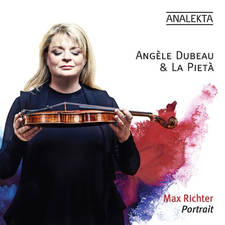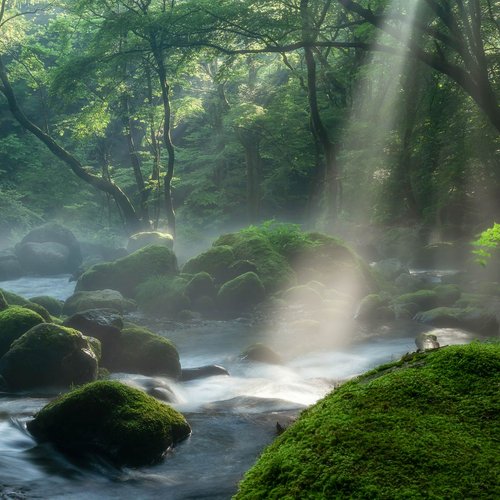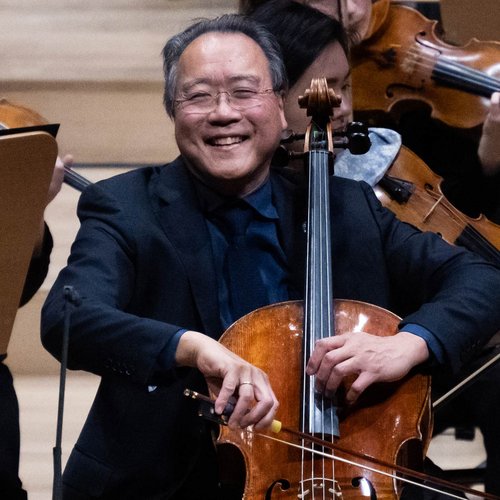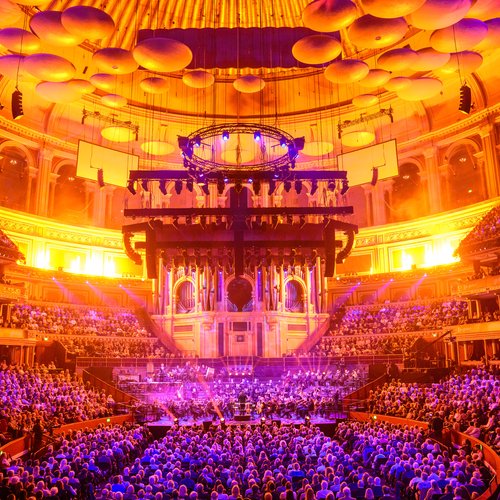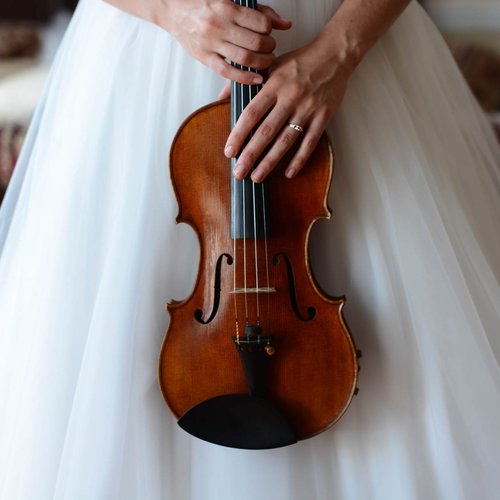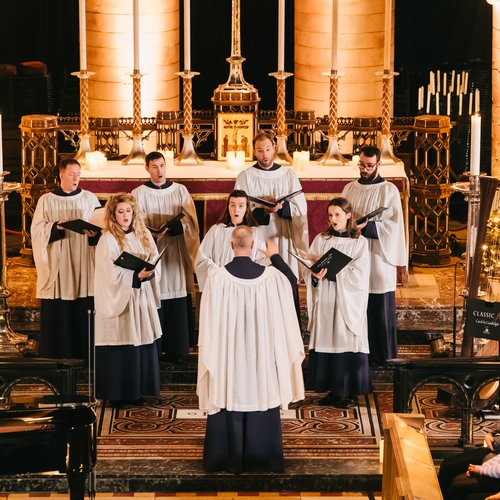Australian water tank turned ‘sound chapel’ brings 24-hour classical music to the Outback
5 May 2022, 12:29 | Updated: 5 May 2022, 13:44
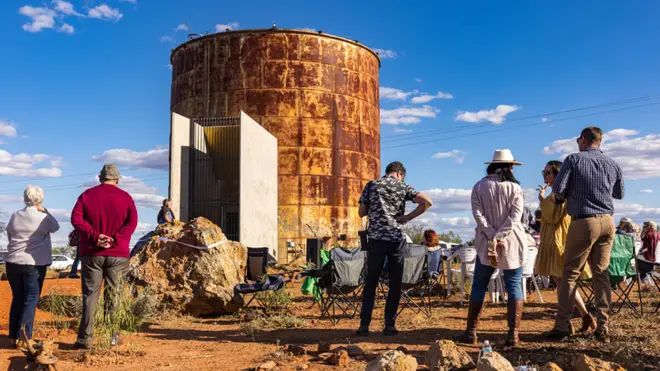
A sound chapel brings string quartet music to the Australian Outback...
Listen to this article
Loading audio...
Just outside the small town of Cobar, in New South Wales, Australia, sits the rusted shell of a water tank on a terrain of arid and rocky ground.
Cobar, and the surrounding area, has suffered from a lack of reliable water supply since the town was established in 1870, so while the water tank’s supposed presence isn’t unusual, its contents are.
While most would expect to find water inside the structure, or perhaps an empty tank in need of a refill, those who happen on the 10 metre high structure just 1.5km outside of Cobar’s centre, are instead met with a flurry of music notes.
This year, the water tank was reborn as a sound installation.
Launched on 2 April and christened the ‘Cobar Sound Chapel’, the cylindrical shell holds a secret walk-in venue which hosts a 24-hour classical music experience in the middle of the Australian Outback.
Read more: Rejected entries reveal what Sydney’s iconic Opera House could have looked like
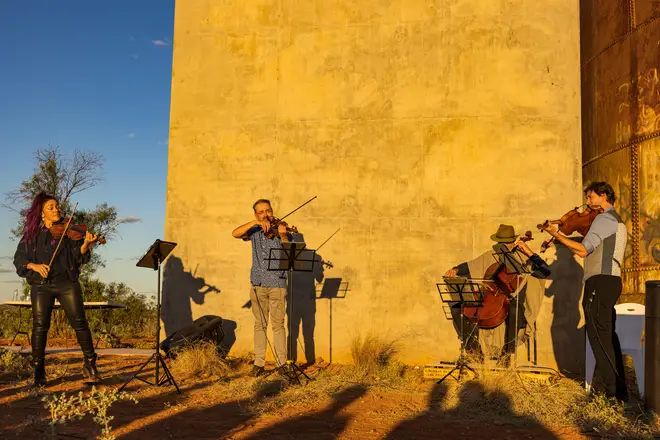
The water container’s transformation from tank to theatre has been two decades in the making. The structure’s musical metamorphosis was dreamed up by Luxembourg-born composer, Georges Lentz, 56, who has been living in Sydney, Australia since the 1990s.
Lentz’s exposure to the Australian Outback and its infinite expansive sky steered his inspiration to create the monumental work, ‘String Quartet(s)’. The 372-minute (24-hour) long piece is scored for digital string quartet, and Lentz dreamed of finding a venue within the Outback – the landscape which inspired the work – that could house his lengthy creation.
The composer first considered Cobar as a potential location when he came to the town in 2008 for a concert. After a discussion with the town council, they put forward the hill on which the water tank sits, and suggested tearing down the structure to make room for a concert venue.
Lentz was horrified with the suggestion, and instead called Pritzker Prize-winning Australian architect Glenn Murcutt, 85, asking for his help in transforming the water tank into his dream venue. Murcutt recalls finding the idea “mad” yet “extraordinary”.
Read more: Composer spends lockdown installing 72 speakers in a forest. The result is magical.
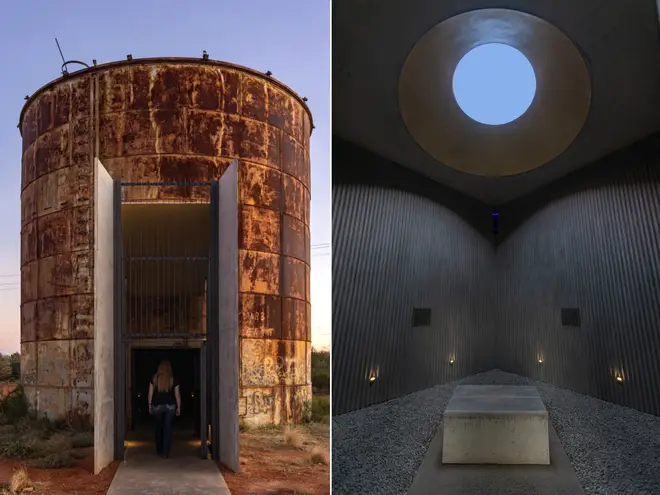
Construction of the project began in 2020, with funding from the NSW government as well as their principal sponsor, Manuka Resources, a local gold and silver mining company.
Although the outer shell is cylindrical, the Murcutt’s interior creation is a cube room made out of corrugated iron-impressed formwork.
The chapel is solar powered, which keeps the four speakers on each wall of the cubed interior playing the music 24 hours a day. Lentz describes the acoustic as intimate, with just the right amount of reverb.
A hard bench sits in the middle of the room where travellers can rest and enjoy the music. On hot days, the inside of the sound chapel is 10 degrees cooler than the outside, making it a welcome shelter both artistically and practically.
Read more: Artist’s striking photography reveals hidden depths of musical instruments
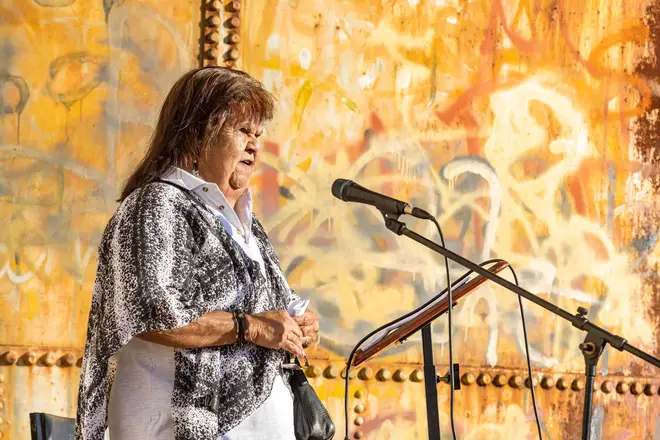
The land where the building sits is part of the traditional territory of the Wongaibon people, an Australian Aboriginal group, which stretches over some 27,000 square miles.
Local Aboriginal artist Sharron Ohlsen was brought onto the project to create window art inside the structure, and Aunty Elaine Ohlsen, an elder of the Wongaibon people of north-western NSW, spoke at the venue’s launch event this year.
Though the venue was finished by 2021, due to lockdown restrictions in the area, the sound chapel’s official opening was pushed back to April 2022.
Read more: Composer spends lockdown installing 72 speakers in a forest. The result is magical.
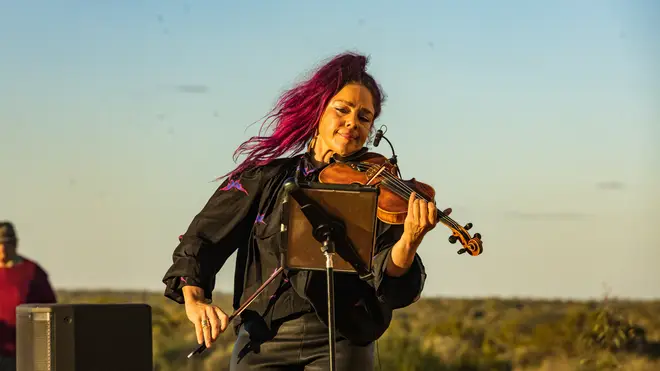
Also at the official launch were The Noise String Quartet, an ensemble Lentz worked with to create his lengthy ensemble work. Together, the ensemble and composer recorded around six hours of material for Lentz’s piece, which was then transformed into the 24-hour long work it is now through digital means.
At the sound chapel’s opening, the group performed Haydn’s Sunrise quartet, which was interspersed with improvisations from the players.
This programming highlighted the journey of string quartet music across history, starting with the Haydn and then segueing into the start of Lentz’s new composition, which now plays continuously in sound chapel.
On the side of the new sound installation is a quote by English poet, William Blake, describing its purpose.
It reads, “There is a Void, outside of Existence, which if enterd into. Englobes itself & becomes a Womb”.
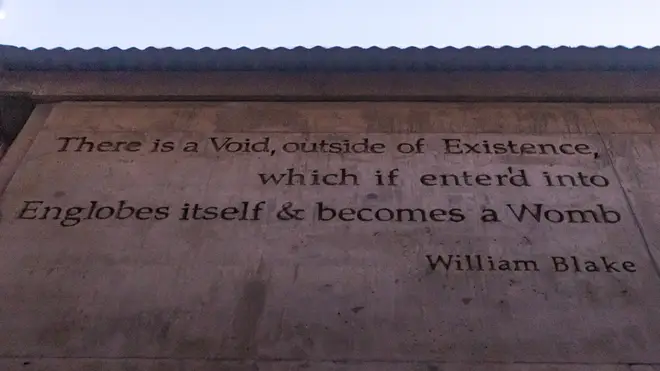
The venue is perhaps a world in itself, 1.5km outside of town (existence), and inside the structure, its musical learnings allow people to grow.
The Cobar Sound Chapel is not completely sealed, which means this musical world can escape into the arid landscape surrounding the water tank shell.
Its sounds will hopefully call travellers to visit, and experience classical music in unexpected places...
